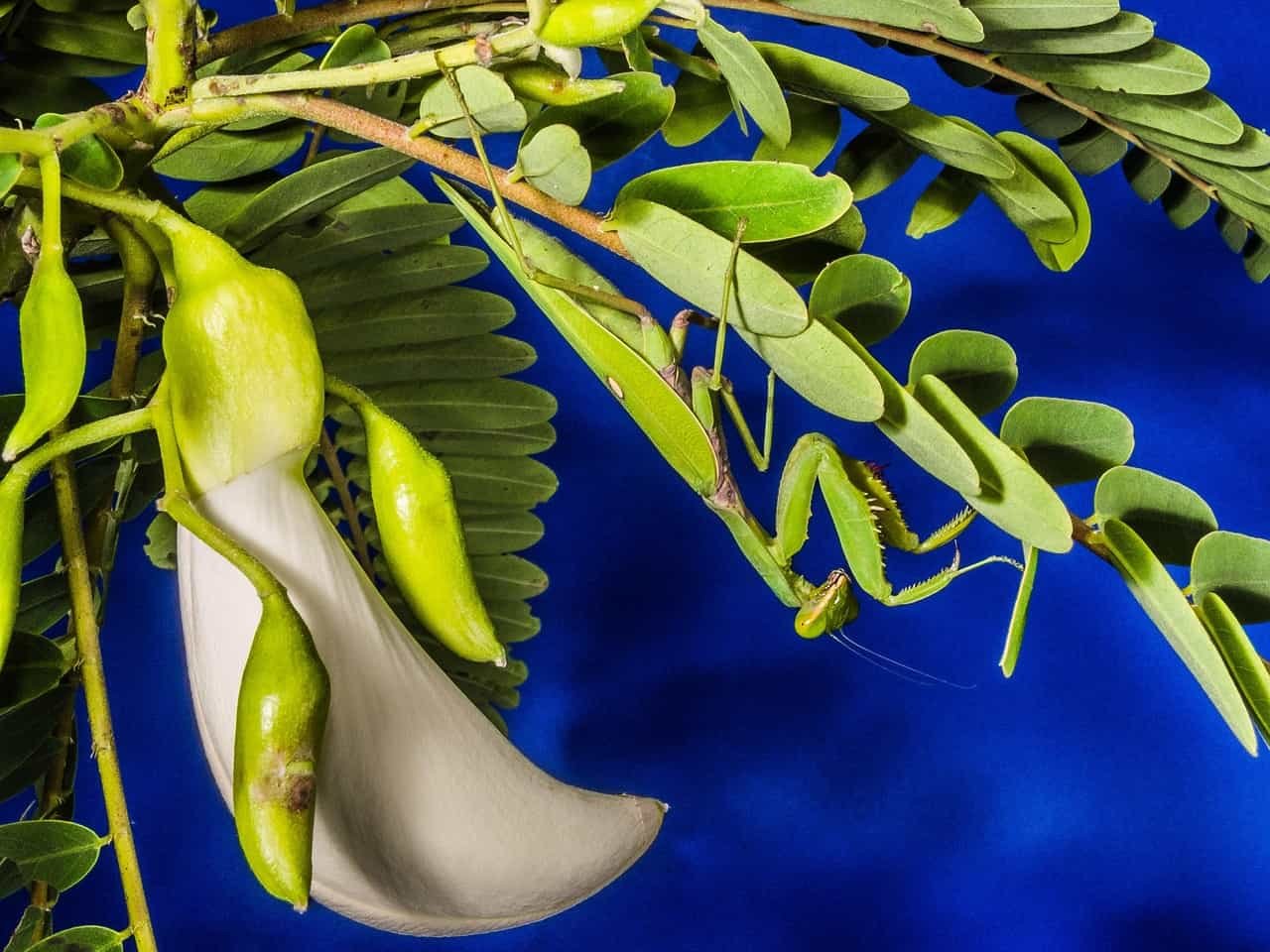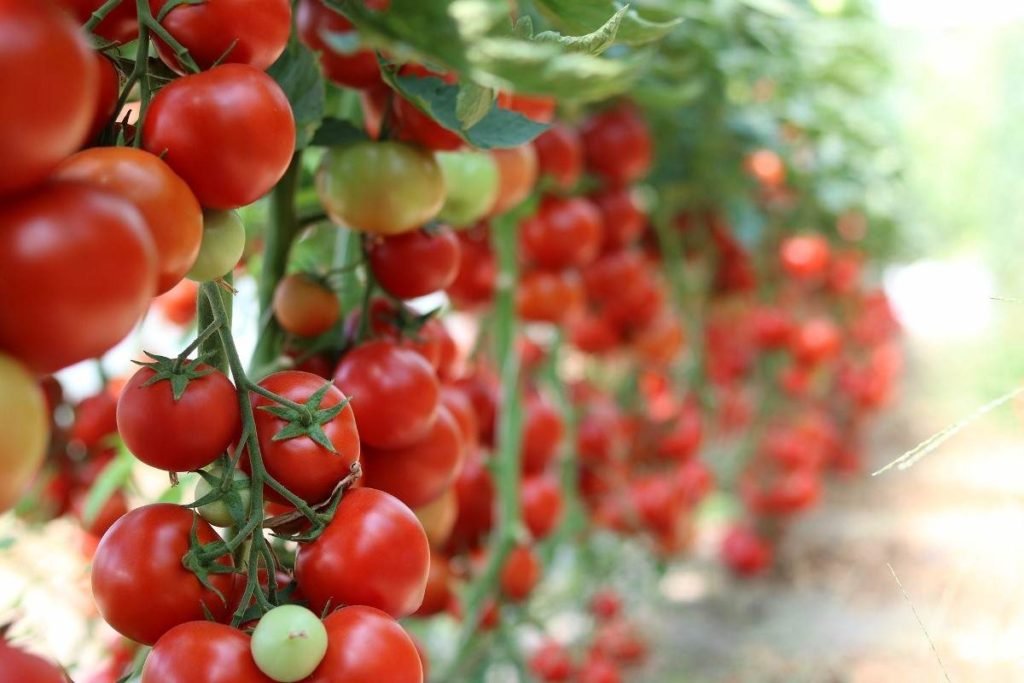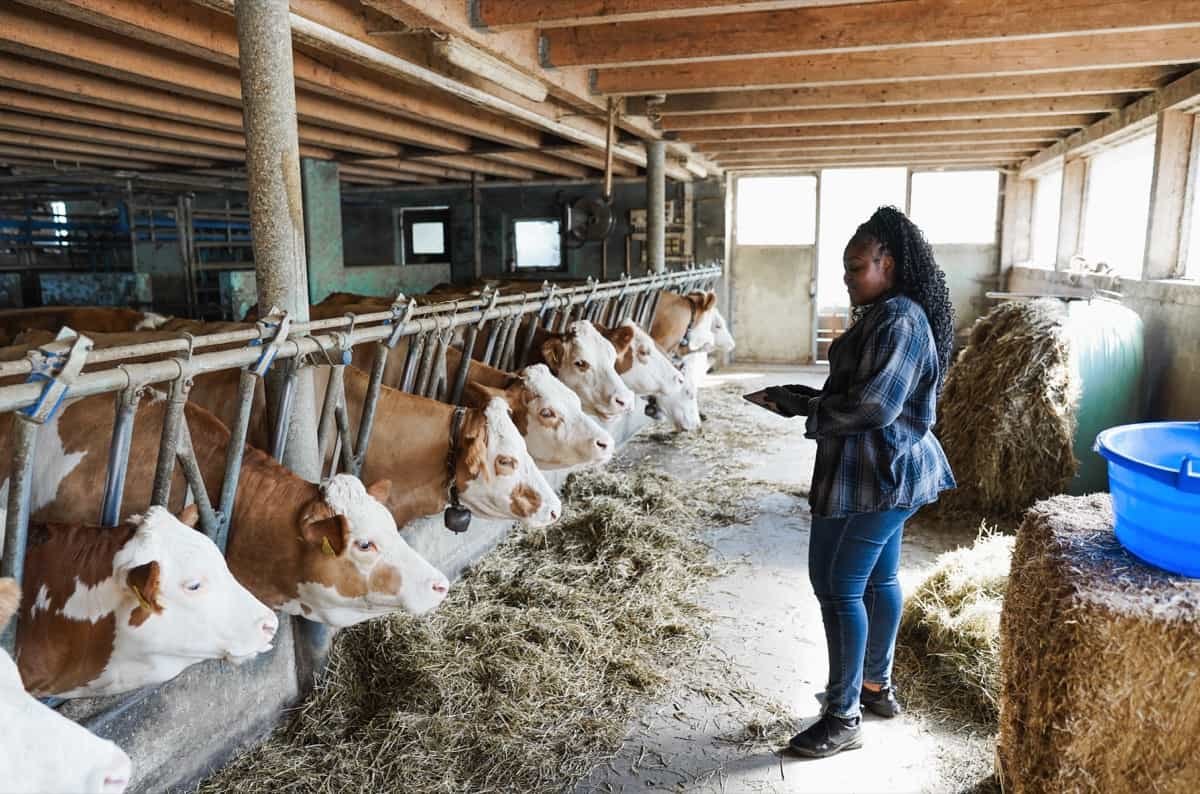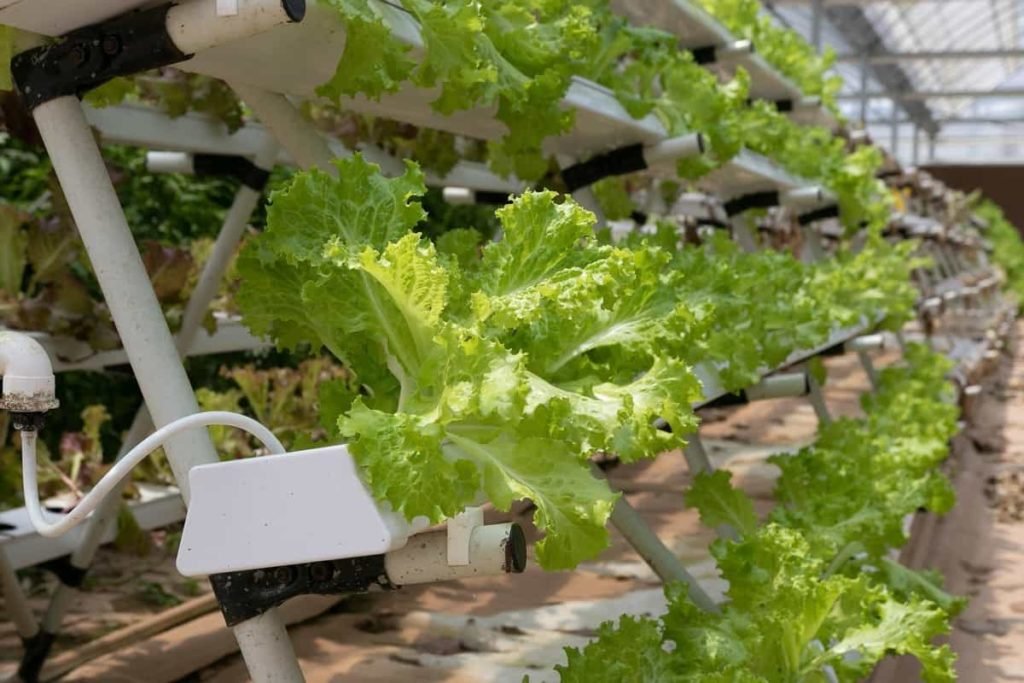Dhaincha, also known as Sesbania bispinosa , is a leguminous plant that grows quickly and is lauded for its contribution to environmentally responsible agriculture. In addition to its abilities to improve soil health, fix nitrogen, and provide fodder for cattle, it is a plant that is native to tropical regions and extremely valuable. Green manure is a method that farmers and gardeners employ to revitalize soils that have been deteriorated, minimize the amount of erosion that occurs, and lessen their dependency on artificial fertilizers.
Because of its propensity to thrive in difficult climates and poor soils, it is an essential crop for environmentally responsible farming. Your approach to soil management and crop yield can be significantly altered if you have a better grasp of the benefits that Dhaincha offers, regardless of whether you are a smallholder or a large-scale farmer.
Sesbania bispinosa (Dhaincha): Cultivation, Soil Health, and Livestock Feed
Characteristics and Details of Dhaincha (Sesbania bispinosa)
| Attribute | Details |
|---|---|
| Scientific Name | Sesbania bispinosa. |
| Common Name (English) | Dhaincha. |
| Family | Fabaceae. |
| Growth Habit | Annual herb or shrub. |
| Native Regions | South Asia, Africa, Australia. |
| Primary Uses | Green manure, fodder, medicine. |
| Nitrogen Fixation | Yes. |
| Soil Adaptability | Poor to fertile soils. |
Benefits of Growing Sesbania bispinosa as Green Manure
Because of its quick growth and nutrient-rich biomass, dhaincha is an excellent candidate for use as green manure. The release of nitrogen, phosphorus, and organic matter takes place when it is plowed back into the soil, which increases the fertility of the soil for succeeding crops such as rice or wheat. The use of synthetic fertilizers is reduced as a result of this method, which in turn reduces both prices and risks to the environment.

Farmers have reported an improvement in the texture of the soil and the retention of water, which helps crops deal with droughts. Additionally, the dense foliage of Dhaincha helps to inhibit weeds, which saves time and effort that would otherwise be spent manually weeding.
| Related Crops | Key Nutrients Released | Soil Types Benefited | Regional Adoption |
|---|---|---|---|
| Rice, Wheat | Nitrogen, Phosphorus | Sandy, Loamy | India, Bangladesh |
| Cotton | Potassium, Organic Matter | Clay-heavy | Sub-Saharan Africa |
| Maize | Calcium, Magnesium | Saline soils | Southeast Asia |
| Sugarcane | Sulfur, Zinc | Acidic soils | Latin America |
| Vegetables | Iron, Boron | Degraded soils | Global |
| Fruit Orchards | Manganese, Copper | Rocky terrain | Arid regions |
How to Cultivate Dhaincha for Soil Fertility Improvement
First, spread Dhaincha seeds in soil that is moist and well-drained at a depth of two to three centimeters. If you want to take advantage of natural moisture, the optimum time to do so is right before the rainy season. Seeds should be spaced 30–45 centimeters apart to ensure vigorous growth. Within a period of six to eight weeks, the plants will develop a dense canopy.
Use a plow to cut the flowers when they are flowering (50–60 days), and then mix them into the soil. At this precise moment, the release of nutrients is maximized. Growing Dhaincha as a cover crop in between main crops is an effective way to gradually recover fertility in soils that have been deteriorated.
| Soil Prep Tools | Seed Rate (kg/ha) | Water Needs | Companion Crops |
|---|---|---|---|
| Plow, Harrow | 10–15 | Moderate (Rainfed) | Rice, Wheat |
| Rotavator | 8–12 | Low (Drought-tolerant) | Millet, Sorghum |
| Manual Hoe | 15–20 | High (Irrigated) | Vegetables |
| Seed Drill | 6–10 | None (Post-rain) | Legumes |
| Broadcaster | 20–25 | Flood-prone areas | Aquatic crops |
| No-Till | 5–8 | Saline soils | Coastal regions |
Dhaincha Crop Uses in Sustainable Agriculture Practices
Dhaincha contributes to sustainability by lowering the amount of chemical inputs and increasing the amount of biodiversity. In crop rotation, it is utilized to break the cycles of pests and to replace the nitrogen in the soil. Within the context of agroforestry, it serves as a windbreak or a source of shade.
In addition, farmers intercrop Dhaincha with cereals in order to reduce the growth of weeds and increase crop yields. Because it has such deep roots, it is an essential component of conservation agriculture because it prevents the leaching of nutrients.
| Practice | Benefit | Crop Pairing | Climate Suitability |
|---|---|---|---|
| Intercropping | Weed suppression | Rice, Maize | Tropical, Subtropical |
| Agroforestry | Microclimate regulation | Coconut, Mango | Humid regions |
| Conservation Tillage | Erosion control | Wheat, Barley | Semi-arid |
| Cover Cropping | Moisture retention | Cotton, Soybean | Monsoon-prone |
| Alley Cropping | Nutrient cycling | Cassava, Yam | Sloped terrains |
| Fallow Integration | Soil regeneration | None (Fallow period) | Degraded lands |
Best Time to Plant Sesbania bispinosa Seeds
When it comes to planting Dhaincha, the best time to do it is either before the monsoon or during the early rainy season. The optimal time to plant seeds in tropical climates is between June and July, when there is sufficient moisture for the seeds to germinate. The planting of crops in irrigated areas might be staggered from the beginning of spring to the beginning of October.

It is best to avoid planting seeds during periods of high heat or frost. Under ideal conditions, seeds germinate within five to seven days; therefore, timing plays a significant role in ensuring rapid ground cover before weeds take root.
| Season | Temperature Range (°C) | Rainfall (mm/month) | Altitude (meters) |
|---|---|---|---|
| Pre-Monsoon | 25–30 | 100–200 | 0–500 |
| Early Rainy Season | 28–35 | 200–400 | 500–1000 |
| Post-Rainy | 22–28 | 50–150 | 1000–1500 |
| Spring (Irrigated) | 20–25 | 0 (Irrigation) | Plains |
| Winter (Frost-Free) | 18–22 | 30–50 | Lowlands |
| Coastal Regions | 25–32 | 150–300 | Sea level |
Role of Dhaincha in Organic Farming and Crop Rotation
Dhaincha is used in organic farming as an alternative to synthetic fertilizers since it fixes nitrogen from the atmosphere. This ensures that a consistent supply of nutrients is maintained when it is alternated with nitrogen-demanding crops such as maize or cotton. Moreover, this approach interrupts the habitats of pests, which results in fewer infestations.
Restoring the health of the soil and getting it ready for the next crop cycle can be accomplished, for instance, by planting Dhaincha following a rice harvest.
| Rotation Cycle | Preceding Crop | Following Crop | Pest Suppression |
|---|---|---|---|
| 1-Year | Rice | Wheat | Stem Borer |
| 2-Year | Cotton | Soybean | Aphids |
| 3-Year | Sugarcane | Maize | Root Nematodes |
| 6-Month | Vegetables | Legumes | Leaf Miners |
| Fallow Period | None | Dhaincha | Weeds |
| Mixed Cropping | Millet | Dhaincha | Rodents |
Sesbania bispinosa as a Natural Nitrogen-Fixing Plant
Through the presence of bacteria, the root nodules of Dhaincha are able to transform atmospheric nitrogen into a form that plants can utilize. This procedure enriches the soil without the use of any pesticides by adding between fifty and one hundred kilograms of nitrogen per acre. Due to the plant’s capacity to flourish in soils that are deficient in nutrients, it is an economical option for smallholder farmers.
During the process of decomposition, the nitrogen is made available to following crops, which in turn promotes the establishment of sustainable plants.
| Nitrogen Fixation Rate (kg/ha) | Bacteria Strain | Soil pH Tolerance | Complementary Crops |
|---|---|---|---|
| 50–70 | Rhizobiumspp. | 5.0–7.5 | Cereals |
| 70–90 | Azotobacterspp. | 4.5–8.0 | Vegetables |
| 90–110 | Bradyrhizobiumspp. | 6.0–8.5 | Legumes |
| 40–60 | Clostridiumspp. | 5.5–7.0 | Oilseeds |
| 30–50 | Anabaenaspp. | 6.5–9.0 | Fruits |
| 20–40 | Frankiaspp. | 5.0–6.5 | Trees |
How to Use Dhaincha as Livestock Fodder for Cattle
It is particularly palatable to cattle, goats, and sheep to consume the soft leaves and stems of the dhaincha plant. For optimal nutritional value, harvest the crop between 45 and 50 days after planting. A new feed can be made from the chopped biomass, or it can be sun-dried and stored. The digestibility and high protein content (18-22%) both contribute to an increase in milk production and promote animal health.

When plants reach maturity, however, they become fibrous and less nutrient-dense, so you should avoid feeding them.
| Livestock Type | Daily Intake (kg) | Protein Content (%) | Feeding Method |
|---|---|---|---|
| Dairy Cattle | 10-15 | 20-22 | Fresh or Silage |
| Goats | 3-5 | 18-20 | Chopped |
| Sheep | 2-4 | 19-21 | Mixed with Hay |
| Buffaloes | 12-18 | 21-23 | Sun-Dried |
| Poultry | 1-2 (Grass) | 15-17 | Powdered Supplement |
| Horses | 5-8 | 17-19 | Grazing |
Environmental Benefits of Growing Dhaincha in Farmland
By storing carbon in the soil, Dhaincha helps to mitigate the effects of climate change. There is less salinity in coastal locations as a result of its thick roots, which discourage waterlogging. Dust pollution and runoff during periods of heavy rainfall are reduced as a result of the covering of bare soil.
It is also beneficial to pollinators, which contributes to an increase in farm biodiversity.
| Environmental Impact | Metrics | Comparison to Other Crops | Long-Term Benefits |
|---|---|---|---|
| Carbon Sequestration | 2–3 tons CO₂/ha/year | 2x higher than Sun Hemp | Improved soil organic matter |
| Water Retention | 30% increase in moisture | 1.5x better than Cowpea | Drought resilience |
| Pollinator Attraction | 50+ insect species | 3x more than Clover | Enhanced crop pollination |
| Salinity Reduction | 15–20% decrease | 2x faster than Mustard | Coastal farming viability |
| Erosion Control | 40% less runoff | 1.8x better than Grasses | Topsoil preservation |
| Biodiversity Boost | 10–15 new species/year | 3x higher than Fallow land | Ecosystem stability |
Step-by-Step Guide to Planting and Harvesting Dhaincha
The soil should be prepared by first removing huge debris and then loosening the top layer. Spread or drill seeds at a rate of 10-15 kilogrammes per hectare to plant seeds. A modest irrigation should be performed if the rains are delayed.
After two weeks, thin out seedlings that are overcrowded and monitor their growth. Harvest: Cut into green manure or fodder at the flowering stage, which is between 50 and 60 days. To hasten the process of decomposition, incorporate the material into the soil and immediately till it.
| Stage | Action | Tools Needed | Time Required |
|---|---|---|---|
| Soil Prep | Clear debris, plow | Tractor, Hoe | 1–2 days |
| Sowing | Broadcast/drill seeds | Seed Drill, Hands | 1 day |
| Irrigation | Light watering | Sprinkler, Can | 2–3 hours |
| Thinning | Remove excess seedlings | Hand tools | 1 day |
| Harvesting | Cut at flowering | Sickle, Machete | 1–2 days |
| Incorporation | Plow under biomass | Disc Harrow | 1 day |
Dhaincha’s Impact on Reducing Soil Erosion Effectively
Through its extensive root system, Dhaincha is able to connect soil particles, thereby avoiding erosion caused by wind and water. As a living barrier, it can reduce runoff by as much as forty percent when it is applied on slopes. It is the quick ground cover of the plant that protects the topsoil from degradation, so keeping the nutritious content of the soil.
Farmers in locations that are prone to erosion plant Dhaincha along contours to provide the greatest possible protection.
| Erosion Type | Reduction Rate (%) | Root Depth (cm) | Suitable Slopes (%) |
|---|---|---|---|
| Water Erosion | 35–45 | 40–60 | 5–15% |
| Wind Erosion | 25–35 | 30–50 | Flat to 5% |
| Sheet Erosion | 40–50 | 50–70 | 10–20% |
| Rill Erosion | 30–40 | 45–65 | 15–25% |
| Gully Erosion | 20–30 | 60–80 | >25% |
| Coastal Erosion | 15–25 | 30–40 | Sea-facing slopes |
Why Sesbania bispinosa is Ideal for Tropical Climates
In settings that are hot and humid, with temperatures ranging from 25 to 35 degrees Celsius, dhaincha thrives. Both waterlogging and poor soils, which are frequent in tropical locations, are not a problem for it. Due of its short lifetime, which lasts between sixty and seventy days, it can be planted many times each year according to crop calendars.
In nations such as India, Bangladesh, and sub-Saharan Africa, it is considered a staple food due to these characteristics.
| Climate Zone | Optimal Rainfall (mm) | Drought Tolerance | Flooding Tolerance |
|---|---|---|---|
| Tropical Wet | 1500–2500 | Moderate | High |
| Tropical Dry | 500–1000 | High | Low |
| Subtropical | 800–1200 | Moderate | Moderate |
| Arid | 300–500 | Very High | None |
| Coastal Tropical | 1000–2000 | High | Very High |
| Highland Tropics | 700–900 | Low | Moderate |
Nutritional Value of Dhaincha for Animal Feed and Grazing
In addition to important minerals like calcium and phosphorus, the leaf of the Dhaincha plant includes 18-22% crude protein, 20-30% fiber, and other nutrients. Increases in weight gain and milk production are observed in livestock that are given Dhaincha. It is possible for animals that are grazing to directly feed on young plants; nevertheless, rotational grazing is recommended in order to prevent overgrazing.
| Nutrient | Content (%) | Daily Requirement (Livestock) | Benefits |
|---|---|---|---|
| Crude Protein | 18–22 | 12–15% for Cattle | Muscle development |
| Fiber | 20–30 | 18–25% for Digestion | Gut health |
| Calcium | 0.8–1.2 | 0.5–1.0% | Bone strength |
| Phosphorus | 0.3–0.5 | 0.2–0.4% | Energy metabolism |
| Potassium | 1.0–1.5 | 0.8–1.2% | Fluid balance |
| Carotene | 150–200 mg/kg | 100–150 mg/kg | Immune support |
How Dhaincha Helps Improve Degraded Agricultural Soil
Dhaincha is able to regenerate soils that have been degraded by providing organic matter and breaking up layers that have been compacted by its roots. Because it is able to withstand high salt and acidity, it is an excellent choice for restoring farmland that has been abandoned.
Growing Dhaincha crops on a regular basis helps to reestablish microbial activity and nutrient balance over time, which paves the path for more lucrative agricultural practices.
| Soil Issue | Dhaincha Solution | Recovery Time (Months) | Crop Suitability Post-Recovery |
|---|---|---|---|
| Compaction | Root penetration | 3–6 | Vegetables, Legumes |
| Salinity | Ion absorption | 6–12 | Barley, Date Palms |
| Acidity | pH neutralization | 4–8 | Tea, Pineapple |
| Nutrient Depletion | Organic matter addition | 2–4 | Maize, Wheat |
| Waterlogging | Drainage improvement | 5–7 | Rice, Sugarcane |
| Alkalinity | Sulfur release | 8–10 | Sunflower, Mustard |
Comparison of Dhaincha with Other Green Manure Crops
When compared to cowpea or sun hemp, Dhaincha expands more quickly and generates a greater amount of biomass. The nitrogen it fixes is more efficient than that of many legumes, and it takes less water than clover does. It is possible that it does not suppress weeds for as long as certain grasses do; however, the fact that it enriches the soil and may also be used as feed gives it an advantage in integrated farming systems.
| Crop | Biomass (tons/ha) | Nitrogen Fixation (kg/ha) | Water Use | Dual Use |
|---|---|---|---|---|
| Dhaincha | 8–12 | 50–100 | Low | Fodder + Green Manure |
| Sun Hemp | 6–10 | 40–80 | Moderate | Fiber + Soil Health |
| Cowpea | 5–8 | 30–60 | High | Food + Fodder |
| Clover | 4–7 | 20–50 | Very High | Forage |
| Mustard | 3–6 | 10–30 | Low | Oilseed |
| Vetch | 7–10 | 40–70 | Moderate | Cover Crop |
Tips for Maximizing Yield from Sesbania bispinosa Farming
To get greater nitrogen fixation, use seeds of high quality that have been treated with rhizobium. Water should be kept in the soil during the germination and early growth stages. For maximum biomass output, plants should be grown in full light.
Harvest at the appropriate time (flowering) to achieve a balance between the amount of nutrients and the rate of decay. Rotating with crops that are not legumes will optimize the benefits to the soil.
| Practice | Implementation | Expected Outcome | Cost-Benefit Ratio |
|---|---|---|---|
| Seed Treatment | Rhizobium coating | 20% higher nitrogen | 1:5 |
| Moisture Management | Drip irrigation | 30% faster growth | 1:4 |
| Spacing Optimization | 30×30 cm grid | 25% more biomass | 1:3 |
| Timely Harvesting | Flowering stage | 40% nutrient retention | 1:6 |
| Crop Rotation | With cereals | 15% yield boost in next crop | 1:7 |
| Weed Control | Manual thinning | 50% less competition | 1:2 |
Conclusion
Dhaincha, also known as Sesbania bispinosa , is a game-changer for farmers who are looking for solutions that are both sustainable and cost-effective. The adaptability of this product allows it to solve a wide range of agricultural concerns, from improving the health of the soil to supplying feed for livestock.
Growers have the ability to increase their output, decrease their influence on the environment, and strengthen their resistance to the effects of climate change by incorporating Dhaincha into their agricultural techniques. Because it can be used as green manure, fodder, or as a tool for controlling erosion, Dhaincha demonstrates that the combination of traditional knowledge and contemporary methods can pave the way for a more environmentally friendly future.















Leave a Reply